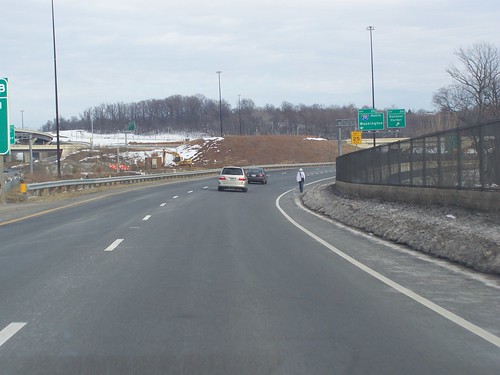State vs. local control over land use: Maryland edition
Because the State of Maryland has been working on PlanMaryland, a statewide land use plan, there has been back and forth between counties and the state versus what is appropriate vs. "inappropriate" land use, and about the proper role of the state vs. localities, etc.
The governor’s determined defense of his controversial land-use plan before the Maryland Association of Counties cut to the quick when he said his plan “is not going to prevent the counties from making stupid land-use decisions. They’re still free to do that. We’re not going to subsidize it.”
In other words, no more subsidies for stupidity.
Such a policy is 40 years late in arriving. But finding a way to put the policy into practice without generating furious protests that influence elections in 2012 and 2014 requires prolonged negotiations. ...
Once again, local opposition is growing against an effort to put some baby teeth in a state land-use plan. Local officials fear heavy-handed state control. They have nightmares of state bureaucrats usurping the traditional zoning and planning roles of local officials.
Who knows what’s best for Frederick, Montgomery or Carroll County? A pointy-headed policy wonk burrowed in a state office building in Baltimore or a local official with intimate knowledge and understanding of a county’s quirks and characteristics?
Can you imagine state planning officials further complicating the many decisions tied to the National Harbor development or adding more complexity to the zoning and planning process for the proposed Science City in Gaithersburg?
In fact, tough state land-use laws might have destroyed James Rouse’s dream of developing a new town on farmland in Howard County. Similarly, Baltimore County’s changes to its zoning laws that allowed for dense population growth in two town centers (White Marsh and Owings Mills) might have been deemed off-limits by earlier state planning czars.
Overcoming the fears of local leaders won’t be easy, particularly at a time when O’Malley also wants to outlaw new septic systems — a move that could have staggering negative implications for many of the state’s less-developed counties.
Still, it is sound policy for the state to tell counties that it will reward them for making sensible land-use decisions that keep population growth within designated areas already served by infrastructure. These counties will continue to get money for school construction, new roads and water and sewer systems.
But counties that insist on promoting sprawl and unchecked development will have to spend more of their own dollars on high-cost public services in those areas.
Rascovar criticizes the possibility of state controls limiting projects like Columbia (maybe an acceptable project), or the creation of growth areas in Baltimore County at Owings Mills and White Marsh, or what is now National Harbor in Prince George's County.
The reality is that all of those developments are classic examples of sprawl and automobile dependence and come at the cost of improving existing areas, and make it that much harder to improve existing areas within Maryland.
They aren't best practice examples of good planning and zoning, but best practice examples of bad planning and the inability of counties to direct land use towards intensification.
E.g., there is all kinds of anguish over failures for smart growth to take at Owings Mills--but it's because it's miles away from other development, and because there is plenty of infill redevelopment and intensification closer in within Baltimore County. (2000 article from the Baltimore Sun)
WRT National Harbor, arguably, because it is located on the Beltway, it does leverage road infrastructure pre-existing in Prince George's County. On the other hand, there is plenty of infill redevelopment and intensification opportunities within the Beltway, served by transit, or future transit.
Instead, National Harbor and Konterra make it that much harder to improve existing areas within Prince George's County, especially at transit sites.
Note that Mitt Romney, as Governor of Massachusetts did some really smart smart growth stuff, creating the "Office of Commonwealth Development" to coordinate state government capital investment and to incentivize localities to do the right thing.
He'd probably disavow all that now, but it was an impressive course of action at the state level, taking what Maryland had started to the next level.
Labels: electoral politics and influence, smart growth vs. smarter sprawl, sustainable land use and resource planning, urban design/placemaking, urban revitalization, urban vs. suburban vs. rural




0 Comments:
Post a Comment
<< Home